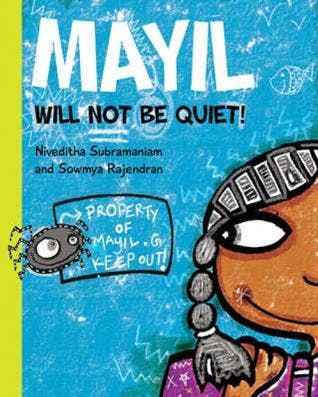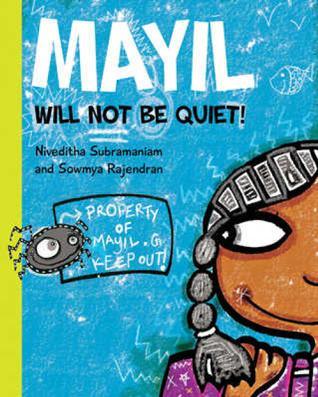Countering Gender Bias: "Boys have trucks - Girls have dolls"
Jan 21, 2015
Story



In my textbooks I learned that only men
are kings and soldiers.
Till I read a book in which famous,
queens ruled and fought against enemies.
In my textbooks I learned that only men
are doctors.
When I went to a doctor I saw that
she was a woman.
In my textbook I learned that only men
do farming in my country,
until, on a train journey I saw women
working in the fields.
I have learned that I have a lot to learn by seeing.
– Pooja, Ramya, Anuj, Utkarsh, Students of Class VII, Baroda
(National Focus Group on Gender Issues in Education 2006)
I came across the above observation in relation to one of my projects in the programme of Gender Studies when I was preparing a report on gender bias in Indian textbooks. The depiction of unbalanced gender roles and the social perception of distinction between the private vs. public domains are predominant in textbooks as well as in the mode of teaching by the parents. Rhymes, legends and everyday examples portray men as active and women as passive. Gender disparity is also rooted in the nursery rhymes that project stereotypical behavior with most of the superheroes as males. English rhymes also reflect the same sexist stereotype where a pretty fair-complexioned girl receives admiration for beauty and her prettiness is the real accomplishment in comparison with an intelligent smart boy.
Across the world, textbooks have an impact far beyond the immediate confines of school, they are basic vehicles of socialization which inculcates normative values. The training manual for facilitators of Gender Equality Movement in Schools (published by ICRW, 2011) highlights that gender education starts with building gender awareness. This means recognizing the negative impacts of gender stereotypes and addressing the inequalities that arise from them. By reducing gender stereotypes, gender education assists children in building a genuine civic equality where women and men live in relationships built on cooperation and mutual respect. The outcome of gender education for girls is greater self-confidence, assertiveness, independence and engagement in the public sphere.
Firoz Bakht Ahmed (2006) in his report “Male Bias in School Texts”, published in The Tribune comments on various ways of reinforcing sexist stereotypes, where a primary school textbook depicts daddy as the king of the family and mummy as a caring deputy, thereby perpetuating the gender bias by assigning traditional roles to "macho" men and "gentle" women. Meera Srinivasan in The Hindu (August 11, 2010) argues that textbooks need to allow students to rethink and challenge existing gender stereotypes. It quotes one incident which occurred in the classroom where the teacher was discussing great scientists, suddenly one child of VIth grade asked her, ‘weren't there female scientists? How come you don't tell us about them'?” It immediately struck the teacher how children were very closely following the content discussed in the class. The teacher later noted “Another day, we had a debate on who should cook at home. It was very refreshing to hear some boys say they would love to”.
Bengali rhyme books are worth considering in this regard where imagery and expressions are essentially stereotyped. Women are often portrayed as housewives while men are shown as public employees, travelers, musicians, artists, sculptors, soldiers, engineers, scientists, inventors and doctors. Often boys are rebuked for their "girlish" behaviour and advised to act as ‘birpurush’ (valiant, brave, courageous and chivalrous heroes). Marriage plays a pivotal role in the poems which are replete with the images of palanquins or marriage ceremony and the girl is advised about how to behave decently and adjust with in-laws. In fairy tales demons use to kidnap princess and princes keep fighting to rescue and win her. Thus textbooks justify girls as yielding, submissive, docile, immersed in household chores, deprived of fun, frolic, autonomy and agency while boys are good hunters, anglers, chariot riders and drivers, explorers, protectors, fearless and playful.
Reflections of such stereotypes are easily available in the society.
In Indian context marriage and education are often interlinked. For the poor and disadvantaged group educating a girl means wastage of money and time. It is rather easier to marry her off because she cannot earn like a "man". But this observation is not limited to a certain section. For example, in the middle class section of the society where I belong to and where the education for girls has become widespread with the popularity of the slogan “an educated mother makes an educated family” (though her self-reliance is overlooked in the process), education comes with some biases, some strings attached. Girls have options to be educated, but choosing a career "like a man" is not mandatory, it is optional. I am happy that my parents always encouraged me for education and career building without paying any heed to my relatives for whom the main concern for a boy is education and job and for a girl "a happy and prosperous arranged marriage within the same caste". Then again, higher education is not deemed to be necessary for girls compared to the shining prospect of marriage. I have listened thousand times from my neighbours and relatives “get married and then you can pursue your education or whatever degrees you want to”. In my hostel life I met many such ambitious girls who were forced or given a choice to marry before jumping for a “time-consuming” degree. Because marriage also brings relief to the parents who are happy to be free from the duty of protection of their girl, as a new man can take over this “social responsibility” as a "guardian". Even though a woman is educated she is not self-reliant, even if she is a working woman she should ask permission from her husband for every small and big things, which are indispensable parts of a “cultured” upbringing.
There is also a general observation prevalent among my own relatives that women are dim-witted compared to boys.
So what matters is the right kind of education which will not consider women as crutches to lean on others but it will make them stronger in participating equally to contribute positively in the social welfare.
I want the right kind of education and a gender sensitive approach
which will not teach to confine women to stereotyped roles
which will not portray men are explorers and women are homemakers
where the rhymes will not reflect the sexist culture
where a woman can choose her own profession without being bound to conform to the gendered division of labour
where educated women will not compromise and submissively accept an abusive marriage
I dream of a world which will not construct women as passive creatures. It will not treat women’s education as an advantage but as compulsory. Gaining knowledge will not be considered fruitful only in the matters of raising educated children but more for the economic empowerment and self-awareness.
References
Bakht, Firoz Ahmed. 2006. “Male Bias in School Texts.” The Tribune Online Edition. Chandigarh, India (Feb. 26).
Sivashankar, Nithya. 2011, Gender Bender, The Hindu, online edition.
Srinivasan, Meera. 2010. How Textbooks Allow Space for Social Biases, The Hindu, online edition.
Tripathi, Ashish. 2005. The textbook of gender discrimination, Times of India, online edition.




